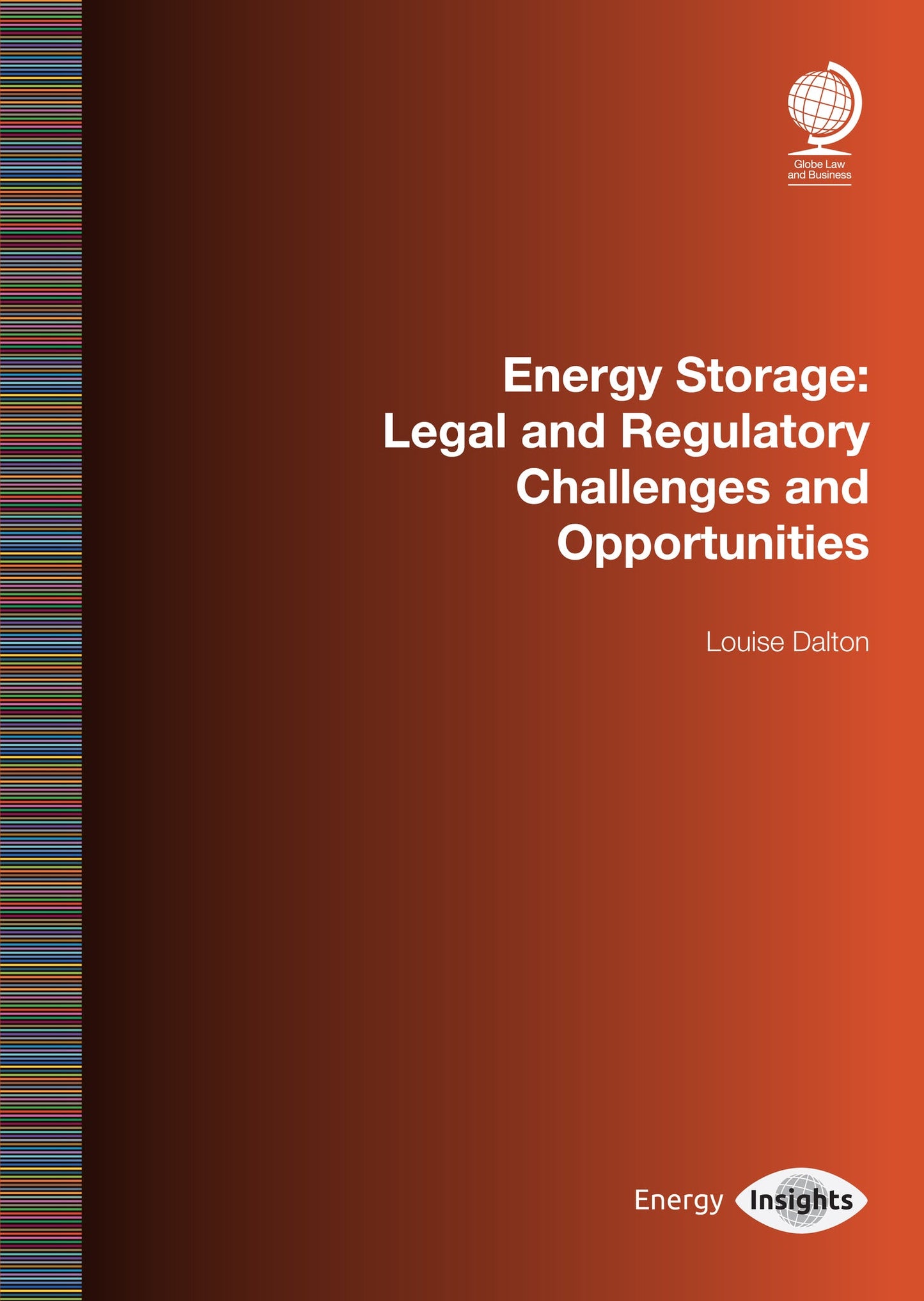We're sorry. An error has occurred
Please cancel or retry.
Energy Storage
Regular price
£75.00
Sale price
£75.00
Regular price
£75.00
Unit price
/
per
Sale
Sold out
Only -1 units left
Energy storage is a key trend in the electricity industry across the globe, with one recent analysis predicting 942GW of storage (excluding pumped storage) will be developed by 2040.

Some error occured while loading the Quick View. Please close the Quick View and try reloading the page.
Couldn't load pickup availability
- Format:
-
18 June 2019

Energy storage is a key trend in the electricity industry across the globe, with one recent analysis predicting 942GW of storage (excluding pumped storage) will be developed by 2040.
This Special Report provides an overview of the key issues in relation to the development of storage projects, including:
•The main technologies
•Regulatory arrangements
•Revenue streams and
•Contracting arrangements
and covers the key policy, commercial and legal principles that underpin this developing sector.

Price: £75.00
Pages: 96
Publisher: Globe Law and Business
Imprint: Globe Law and Business
Publication Date:
18 June 2019
Trim Size: 11.75 X 8.25 in
ISBN: 9781787422704
Format: Paperback
BISACs:
BUSINESS & ECONOMICS / Industries / Energy, Energy & natural resources law, Energy industries & utilities

A concise, accessible treatment of the very key areas and issues that should be taken into consideration in relation to the development of storage projects.
I. Introduction 7
1. Issues and challenges 7
2. Current and predicted storage deployment 8
II. Why is electricity storage required? 9
1. Benefits 9
2. Range of services 9
III. Storage technologies 13
1. Technology summaries 13
2. Technology selection 16
IV. Applications 19
1. Standalone storage projects 19
2. Co-location with generation 20
3. Commercial behind-the-meter applications 22
4. Domestic behind-the-meter applications 24
5. Islanded networks and micro-grids 24
6. Co-location with electric vehicle charging infrastructure 25
V. Regulatory framework 27
1. Overview 27
2. Licensing 27
3. Final consumption levies 28
4. Network charging 29
5. Definition of storage 30
6. Disputes 32
VI. Role of stakeholders 33
1. Government 33
2. Energy regulator 35
3. System operators 36
4. Network owners 38
5. Aggregators 40
6. Suppliers 41
7. Generators 42
VII. Revenue streams 43
1. Revenue stacking 43
2. Frequency response 45
3. Provision of reserve 47
4. Black Start 50
5. Alternative system services 50
6. Energy trading 50
7. Participation in balancing market 51
8. Other revenue streams 52
VIII. Electricity export and trading agreement 53
1. Overview 53
2. Trading arrangements 54
3. Co-located projects 55
IX. Import electricity supply agreement 57
1. Agreement structure 57
2. Pricing 58
X. Grid connection arrangements 61
1. Key considerations 61
2. Existing connections 63
3. Active network management 63
XI. Construction contract 65
1. Contractual structure 65
2. Key issues 66
XII. Operations agreement 69
1. Structure and key provisions 69
2. Additional considerations 70
XIII. Land agreement 71
1. Land requirement 71
2. Key considerations 72
XIV. Permitting 75
1. Consent to construct and operate 75
2. Producer responsibility 76
3. Wider environmental and health and safety requirements 76
XV. Corporate arrangements 79
1. Corporate structures 79
2. M&A activity 80
3. Investors 81
XVI. Financing arrangements 83
1. Overview 83
2. Key challenges 84
3. Key issues 84
4. Key financing terms 88
XVII.Conclusion 91
Notes 92
About the author 95
About Globe Law and Business 96



